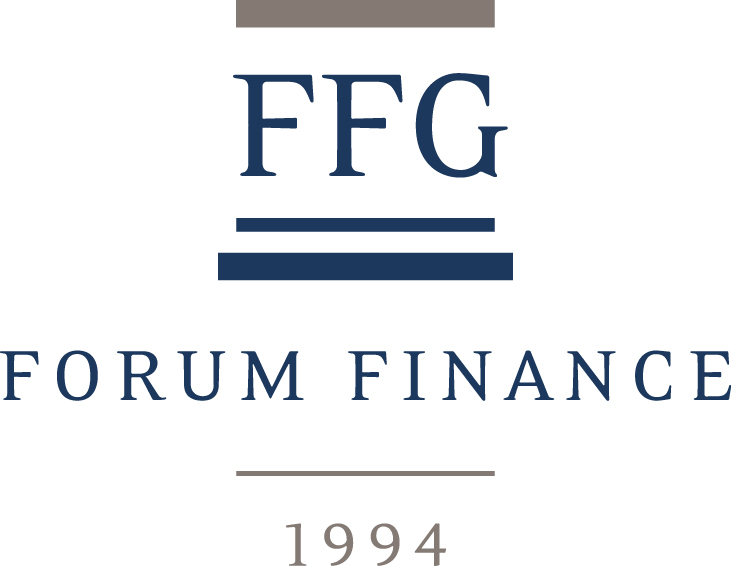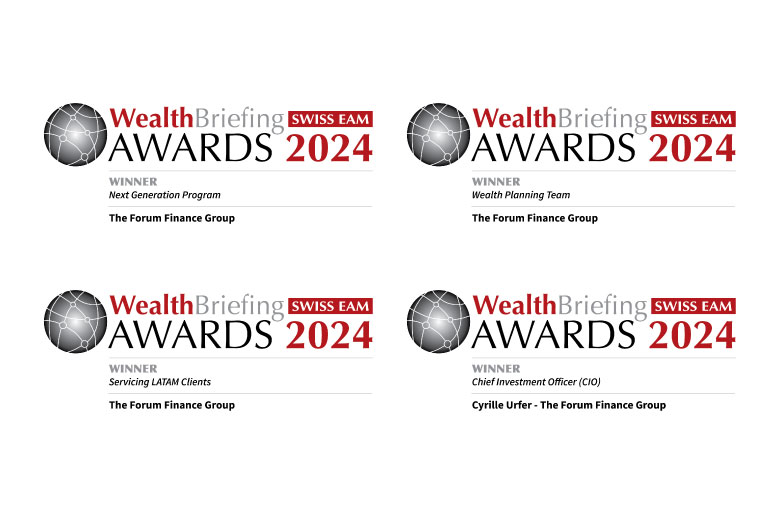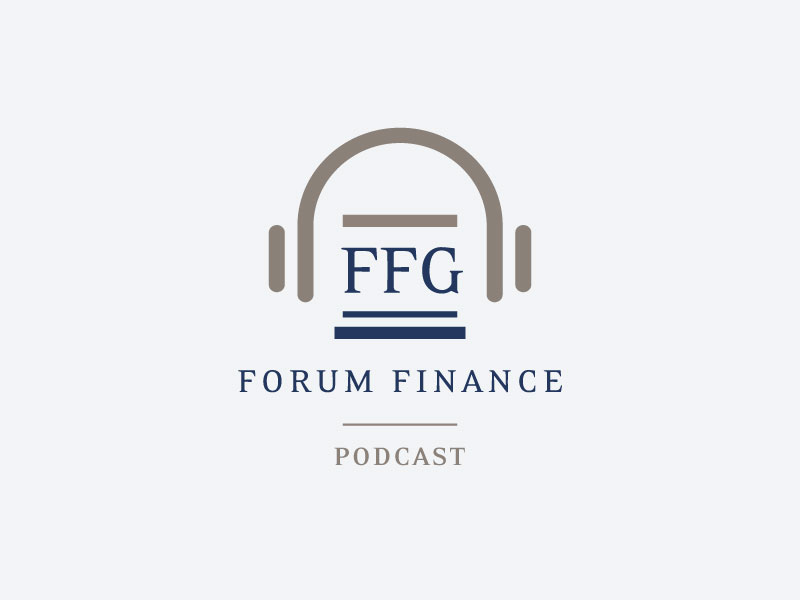Forum Finance wins four awards at the WealthBriefing Swiss EAM Awards 2024
7 March 2024Investment perspectives,Financial News
Forum Finance wins four awards at the WealthBriefing Swiss EAM Awards 2024
Geneva, 7 March 2024 – Geneva-based independent asset manager The Forum Finance Group SA has won four major awards at the WealthBriefing Swiss EAM Awards 2024. In particular, it was declared winner by the jury in the Next Generation Program, Wealth Planning Team, Servicing LatAm Clients categories and Cyrille Urfer was ranked best Chief Investment Officer (CIO).
Announced during the prize-giving ceremony held last night in Zurich, the awards showcase the ‘best-of-breed’ players in the Swiss independent asset management industry. They recognise outstanding companies, selected through a rigorous process and deemed by a panel of experts to have ‘demonstrated innovation and excellence during the last year’. The independent jury comprises specialist consultants, representatives of custodian banks and technology solution providers, as well as other industry experts. These prestigious accolades are particularly important in the current challenging times as they provide clients reassurance in the solidity and sustainability of their asset manager’s business and operating model.
With regard to the Next Generation Program, the panel was ‘impressed with Forum Finance’s internal NextGen program, as well as with their commitment to educating clients around preparing for the Next Generation. In particular, Forum Finance hosted events in Geneva for their clients’ children to introduce them to the world of finance and showing the importance of taking responsibility’.
Concerning the Wealth Planning Team, judges felt that ‘hiring a dedicated wealth planner at partner level, who is focused on NextGen topics, but also in succession planning for their entrepreneurs/clients gives the firm a deep understanding of delivering on client’s needs’.
In relation to Servicing LatAm Clients, the jury found ‘very impressive that Forum Finance has had for over 10 years a dedicated very senior team taking care of the Latin American clientele, with a wealth management offering encompassing wealth planning, portfolio management, asset management and family office services’.
Finally, the expert panel voted Cyrille Urfer best Chief Investment Officer (CIO) on the grounds of his impressive career working for big commercial banks and sovereign investment authorities, as well as leading private banks and asset managers. A veteran Swiss banker, with over 25 years of experience in EU and Middle East, Cyrille Urfer is an internationally recognised expert for his expertise in investment strategy, assessment and selection of managers/strategies, and portfolio management.
Hippolyte de Weck, Managing Partner and CEO of Forum Finance, stated: “We are truly honoured to have our strengths and achievements recognized by these four industry awards. Over the past 30 years, our company has grown significantly to become today one of the leading players in the Swiss market. We are particularly proud of the prize for Best CIO, as providing sound investment advice and achieving superior performance remains at the heart of our business.”
Indeed, having anticipated the evolution of the wealth management industry, Forum Finance has strengthened its structure and organisation over the last few years, as evidenced by the CISA licence granted by FINMA in 2015 and its registration as investment adviser with the US SEC in 2016. Forum Finance invests constantly in its research, investment management and wealth advisory resources, as well as in technology, enabling it to respond effectively to the changing needs of its clients.
For additional information, please contact :
Egon Vorfeld
The Forum Finance Group SA
T: +41 (0)22 552 83 00
E: vorfeld@ffgg.com
ffgg.com
Ricardo Payro
Payro Communication Sàrl
T: +41 (0)22 322 13 17
E: :rp@payro.ch
payro.ch
About Forum Finance
Founded in 1994 in Geneva, Forum Finance offers private banking and asset management services to a high-end global clientele. It has 25 employees who manage and supervise around CHF 2 billion. The company is authorised under the CISA licence by FINMA and is registered with the SEC as investment adviser.

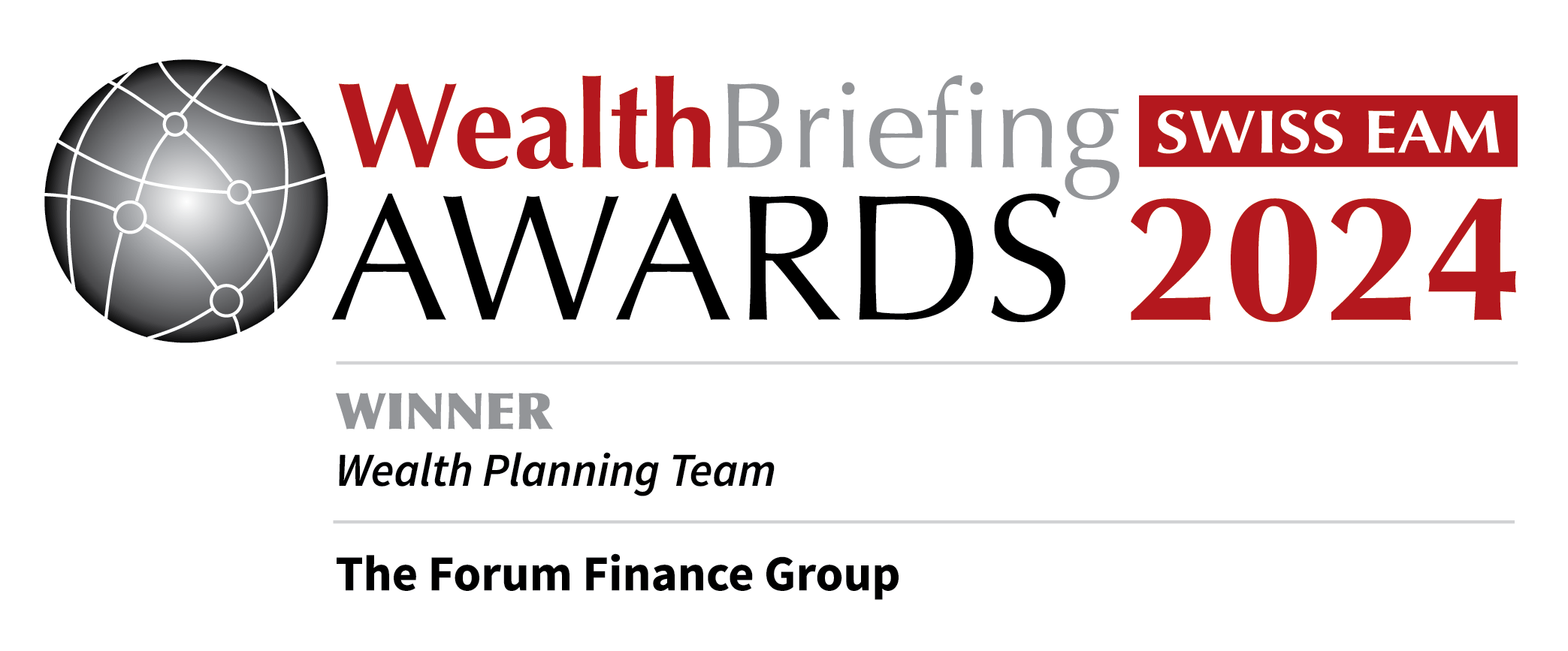
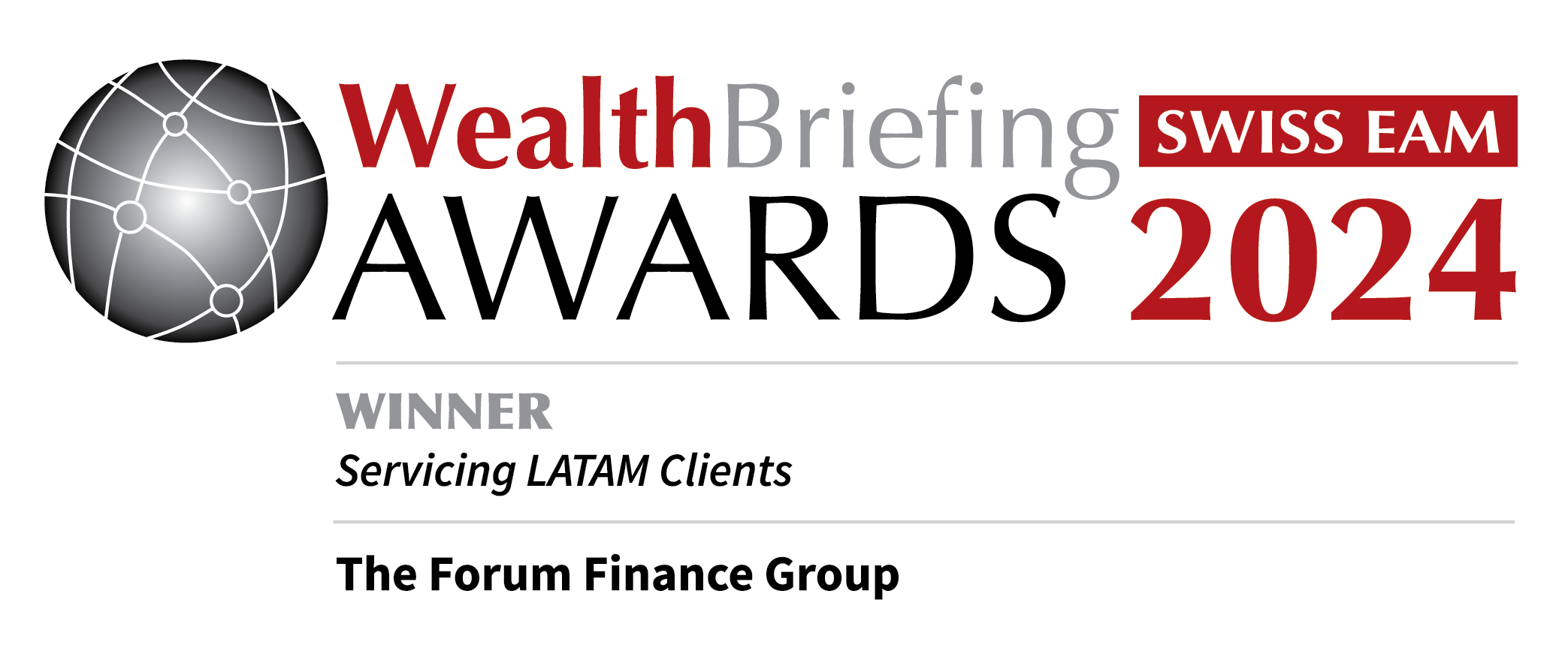
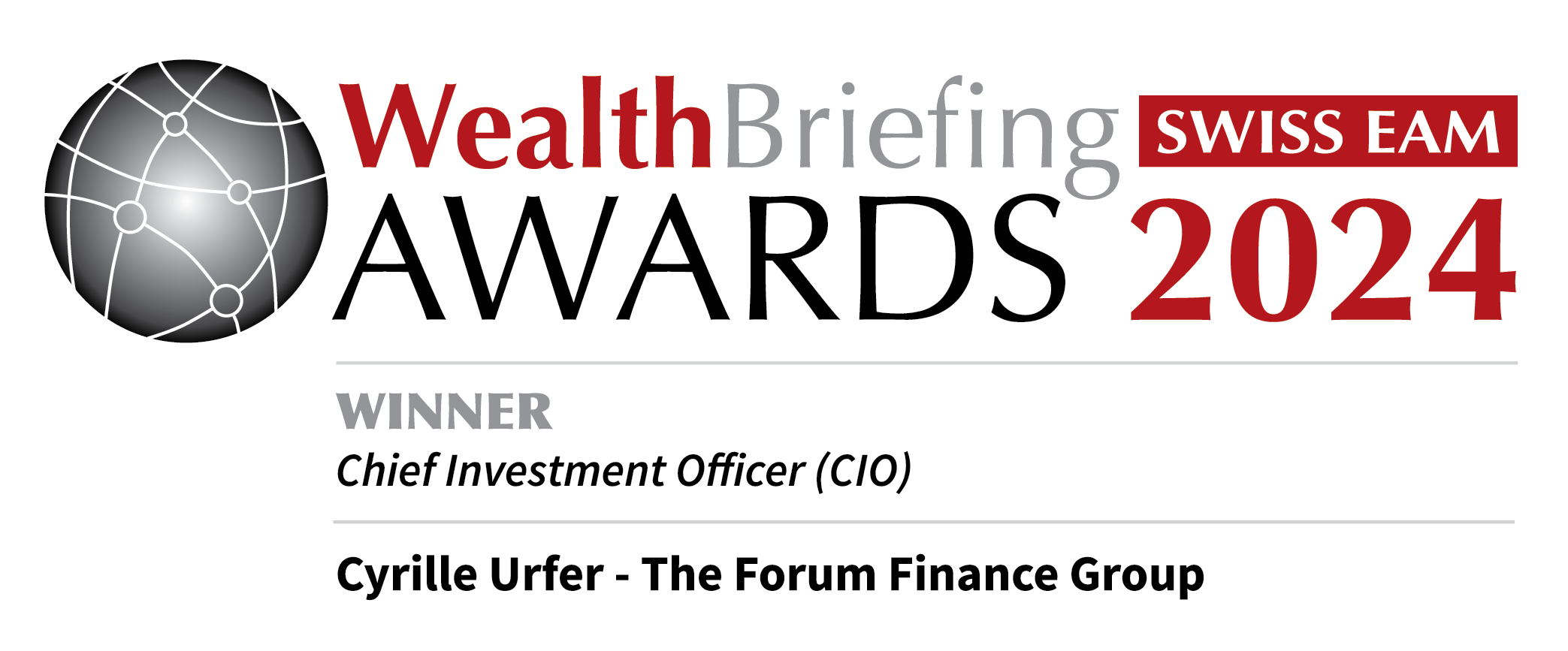
Newsletter | January 2024
12 February 2024Newsletter,Financial News
S&P 500 reached a record high in January (4’931.09) for the first time since January 2022
1.92% THE PERFORMANCE OF THE DOLLAR INDEX
Investment perspective
In January, US economic data continued to support the outlook for continued economic strength while disinflation remained in evidence. In Europe, the Eu-ropean Central Bank (ECB) kept interest rates unchanged. On the economic front, the release of the composite Purchasing Managers’ Index beat expecta-tions, suggesting that manufacturing activity is bottoming out. Against this backdrop, asset class performance was mixed over the month. Fixed income indices posted slightly negative returns, with the long-dated gov-ernment bonds posting the largest decline as long-term yields rose, reversing the gains seen in December. US and European 10-year yields were mostly higher as the curve steepened. There was some relief in the US at the end of the month thanks to lower expectations for US Treasury borrowing. As in 2023, high yield corporate bonds, especially European ones, were again the best performers with a return of 1.1% thanks to a significant narrowing of average spread levels (381 bps for pan-European high yield versus 399 bps at end-December). Equities started the year on a weak note before rallying strongly to end the month higher, despite the Fed's hawkish tone at its January meeting and Chair-man Powel's comments that he did not think a March cut was likely. In terms of returns, we observe the same hierarchy as last year, with Japanese equities (+8.5% in local currency) leading the pact, followed by US large caps (+2.5%), helped by some technology names, and finally Indian equities, while small caps (-3.9%), global emerging markets (-4.6% in USD) and China (-10.6%) were the laggards. It is worth noting that the S&P 500 reached its highest level ever dur-ing the month as the "Magnificent Seven" continued their fantastic run. Commodities delivered positive returns with oil gaining ground, with WTI crude up 5.9%, as tensions in the Middle East escalated and disruptions to shipping routes continued. Gold lost just over 1% in US dollar terms after hitting a new all-time high in December, reflecting a stronger dollar (the dollar index rose 1.9% over the period after three consecutive months of decline).
Investment strategy
So far this year, at least in the US, the 2023 laggards are back to lagging and the winners are back to winning as demonstrated by the performance of the US momentum index, which returned 5.6%. Risk asset prices are significantly higher than three months ago, thanks to the Fed's shift from "higher for longer" to "we are done hiking to ease in 2024". However, the timing and pace of rate cuts remain uncertain, as does the path of quantitative tightening (QT). Although the Fed has signalled its intention to cut three times this year, future markets are pricing in more cuts, assuming that the Fed will act faster and more than it has publicly signalled. Long-term interest rates in developed markets have peaked and offer attractive yield levels. Although interest rate cover has started to deteriorate, corporate fundamentals are starting from a position of strength. As credit spreads have tightened, we should therefore expect that future total returns to be driven mainly by carry rather than spread tightening. After the rally since the end of October, it is time to trim the sails by gradually reducing the directionality of our exposures and building up some liquidity reserves to take advantage of any opportunities that market volatility may present.
Pan-European high yield yields are still above 7.6% and spreads are actually tighter (381 bps) than a year ago
Portfolio Activity/ News
Our positioning since the end of October has allowed us to participate to a large extent in the rally in the last three months. Aware that credit spreads are tight, we are nevertheless maintaining our credit exposure, particularly in high yield, while favouring greater selectivity and quality. We maintain a generous equity weighting in our portfolios, but recognise that greater caution is undoubtedly warranted. We are gradually reducing our equity market positions by a few percentage points and reintroducing long/short strategies into our US equity portfolio. In both Europe and the US, we continue to favour a bias towards quality growth, without ignoring the potential benefits of value. We remain constructive on small caps, particularly in Europe and Switzerland. Although our call on China has proved painful so far, we are maintaining it and taking the opportunity to bring this weighting back to the desired level after the downturn. Finally, our allocation to liquid alternative strategies will reflect our less directional approach to markets by reducing our high beta investments in favour of less directional strategies. We will also introduce an alternative trend strategy to complete our alternative bucket, with the aim of adding further resilience to the overall portfolio.
Download the Newsletter
Outlook 2024
22 December 2023Investment perspectives,Financial News
Executive summary
The year 2024 will be marked by the continued normalization of monetary policy around the world, heightened geopolitical tensions and uncertainty about the decline in inflation.
Rising interest rates and bond yields have fundamentally changed the basis for all investment decisions. This paradigm shift will favour bond investors, who will benefit from higher expected returns, but will further weaken highly indebted actors, especially governments.
Although interest rates have peaked, structural inflationary pressures, such as rising protectionism or the energy transition, will certainly increase the risk of higher inflation than we have seen in recent decades.
As we enter 2024, undoubtedly a year of transformative change, investors' agility will be an asset in seizing the opportunities that volatile markets will offer in the quest not only for wealth preservation but also for real growth.
Economic Outlook
Slower growth ahead but still slightly above potential
US growth to outperform developed peers
China growth upgraded to 4.6% in 2024
Headline inflation falls in all G10 economies except Japan
Core inflation has also fallen, but at a slower pace
Developed central banks have reached the end of their hiking cycle
Monetary policy normalization underway in Japan
Best Investment Opportunities
High nominal and real yields provide a means of locking in cash flows
Front end of curve attractive due to flat yield curve beyond 3 years
Interest rate cuts make cash less appealing
Emerging market corporate debt offers attractive carry
Yields of around 8% for high yield are rare and followed by double-digit returns
European equities set to outperform US equities
Small caps or equal-weighted index trading at significant discount to large caps
Favourable risk/reward profile for Chinese equities
Key Risks
Rising inflation could delay central bank rate cuts
US consumer spending slows sharply
China’s economic woes persist
Unchecked geopolitical tensions and conflicts
Table of contents
- OUTLOOK 2024: EXECUTIVE SUMMARY
- A BRIEF REVIEW OF 2023
- RESILIENT GLOBAL ECONOMY IN 2023 WITH DIVERGENCES
- OUTLOOK FOR 2024
- INVESTMENT CONVICTIONS FOR 2024
- ASSET CLASS VIEWS
Download the Outlook 2024
Newsletter | December 2023
14 December 2023Newsletter,Financial News
S&P 500 and Nasdaq both posted their biggest monthly gains since July 2022
10.7% THE PERFORMANCE OF NASDAQ COMPOSITE
Investment perspective
November saw broad-based gains in bond and equity markets on the back of slowing inflation and easing interest rate pressures. As expected, the FOMC left interest rates unchanged, although Chairman Powell indicated that the Fed would raise interest rates if warranted by the data and economic conditions. The latest release showed that the US economic activity had slowed, with mixed consumer activity due to higher price sensitivity.
Fixed income markets, particularly those with high interest rate sensitivity, reversed course after three months of declines and posted broad-based gains. The US 10Y ended the month at 4.34% (it reached 5.02% in October), down 80 bp from its peak but still higher than in January, while the German 10Y ended the month at 2.45%, 10 bps lower than at the end of 2022. The recent release of lower-than-expected preliminary eurozone CPI for November, which rose 2.4% y/y, slowing from 2.9% in October, acted as a catalyst.
Strong gains in the government bond sector, e.g., US Long Treasury up 9.16%, were accompanied by a tightening of credit spreads, which helped all credit segments. For example, the US dollar hedged Global Aggregate Index gained 5.7%, the Global Aggregate Corporate and Global High Yield gained 4.7% and 5.4% respectively, while the EMD High Yield gained 6.1%.
Consumers ended the month better than expected, with Black Friday online shopping estimated at a record $9.8 billion, Cyber Monday sales estimated at a record $12 billion and total Thanksgiving sales estimated at $38 billion. In this context, the All-Country World Equity Index rose 8.1% in local currency terms, 9.2% in US dollar terms and only 5.8% in euro terms. Breadth improved significantly in November. In the US, the large cap index was up 9.1%, while the tech heavy Nasdaq 100 was up 10.7%. Europe, Japan, and emerging markets gained 6.4%, 6.0% and 8.0% respectively. Within Europe, it is worth noting that the small cap index strongly rebounded, rising almost 9% in euro terms.
The US Dollar Index (DYX) was under heavy pressure and closed 3% lower, the Emerging Market Currency Index gained 2.8% and the Chinese Renminbi gained 2.5%. West Texas Crude Oil ended the month down 6.2% while Gold gained 2.7% over the month. The equity volatility index (VIX) fell to 12.9%, its lowest monthly close level in 2023.
Investment strategy
October’s CPI confirmed the disinflationary momentum, with the annualized core CPI at its lowest level since September ‘21, while the core PCE fell to its lowest level since March ‘21.
The release of better inflation data came as a relief, allowing the US 2-year Treasury yield to fall 35bp to around 4.7% and the US 10-year yield to fall 55bp to around 4.35%. The rise in interest rate contributed to a significant easing in financial conditions amid growing optimism about the end of the tightening cycle.
Since the November FOMC meeting, we have seen a significant shift in Fed funds rate expectations. Indeed, market participants are now pricing in a near-zero chance of a rate hike in December. Despite Fed officials reiterating their “higher-for-longer” message, the market’s median expectation for the fed funds rate at the end of 2024 fell from a high of 4.83% to 4.19% at the end of November.
The potential pivot in central bank policy, positioning and improved sentiment were the main drivers behind the market rally. EPFR flows data showed a net inflow of $40bn into global equities in the two weeks to 21 November. In the US, the 3Q earnings season ended with growth of around 4.8% as at 30 November. The focus now turns to 4Q23, which fell further this month to 2.9% from 8.0% at the end of September, putting the double-digit earnings growth rebound in 2024 under greater scrutiny.
EMERGING MARKET DEBT CORPORATE YIELD-TO-WORST STANDS AT 7.5% AT THE END OF NOVEMBER
Portfolio Activity/ News
US indices broke a three-month losing streak, while Treasuries posted one of the best monthly performances on record, with a rally across the curve and some flattening. As highlighted in October, the market rallied strongly on a positioning tailwind that could continue as trend strategies and shorts continue to unwind positions.
We started the month with an overweight position in equities, which we increased during the month with some rebalancing out of defensive strategies such as US long/short and global low volatility in favour of a global strategy that uses a very compelling combination of macro decisions with more traditional bottom-up stock picking as part of the process.
In fixed income, we carried on our gradual increase of our interest rate sensitivity and maintained our constructive stance on credit including our emerging market high-yield corporate debt position.
Similar to our equity allocation, we have reduced our positions in credit long/short strategies and those invested primarily in leveraged loans, which have very low interest rate sensitivity.
Our allocation to liquid alternative strategies has remained broadly unchanged, with a clear preference for risk-parity strategies over trend and global macro strategies, while recognizing that trend strategies may have been repositioned after the rally and could therefore benefit from further upside.
Download the Newsletter
Newsletter | November 2023
8 November 2023Newsletter,Financial News
U.S. 10-year yield flirted with 5.0 percent, finishing at 4.93%, down from the high of 5.02%
- 6.8% THE PERFORMANCE OF RUSSELL 2000 INDEX
Investment perspective
All inflation metrics have slowed considerably since their peak, but all remain still above central bank targets. Despite this, developed central banks in major developed markets have reiterated their decision to pause monetary tightening cycle, which could mean that we have indeed reached the end of the cycle. Despite central banks pause, the US 10Y yields rose just over the 5% mark and has conditioned market behavior and returns. At 4.93% at the end of October, yields have not been this high since mid-2007. The 2Y/10Y spread finished the month at 16 bps after peaking at over 110 bps in July.
October was a terrible month for financial markets. It was an awful one for eq-uity markets, but also for bondholders across all sectors especially for those with long maturities. The Global Aggregate index hedged in U.S. dollar was down 0.7%, the Global Aggregate Corporate and Global High yield were down 1.0% and 0.9%, respectively, while EMD USD Aggregate dropped 1.5%. As in September, the worst performance was recorded on the US Long Treasury seg-ment with a decline of 4.9% after an 11.8% drop in the 3rd quarter.
The All-Country World index recorded a decline of 2.7% in local currency and more than 3% in U.S. dollar. In the US, the Equal Weight Index fell by 4.1%, while the main index was down 2.1%. In addition to the sharp decline in small-cap indices (-6.3%), we also note the significant and consequential fall in value-style indices (-3.5%) compared to growth indices such as the Nasdaq 100 (-2.1%). European indices started the 4th quarter on the back foot as well, slipping 3.6% in October. Mid- and Small caps materially underperformed large caps with declines of 4.8% and 5.9%, respectively. In U.S. dollar, emerging markets declined by 3.9%, China A by 3.0% and Frontier markets by 5.8%.
The U.S. dollar index (DXY) strengthened marginally (+0.5%) while the Japanese yen continues to plummet to new lows against the U.S. dollar. As is often the case in these risk-off phases linked to geopolitical tensions, the price of gold benefited greatly, rising by 7.3%. More surprising was the 10.8% fall in the price of the West Texas crude oil.
Investment strategy
At the beginning of the year, the consensus view was that a recession was inevitable, due to the rise of oil prices and, above all, due to a restrictive monetary policy that saw key interest rates raised at an unprecedented speed and level.
Some nine months later, the latest release of the real GDP growth for the US economy in the third quarter was surprisingly strong, with an annualized growth of 4.9% q/q. The situation is quite different in Europe, where the latest publication confirmed an anaemic growth that is flirting with the levels generally associated with a contraction phase.
After a spike in inflationary pressures in the wake of rising oil prices, the figures published in October showed a decline, which should reassure central banks. As a result, we do not expect any further rate hikes and believe that we have reached the peak of the cycle.
In the US, the long-term interest rates have risen on the back of continued economic strength, particularly in the labour market, which has further postponed a rate cut and the growing need for issuance to finance the budget deficit.
As bond yields have risen in recent month, the asset class should come back in favor with investors. What’s more, reduced uncertainty over the path of key interest rates and falling inflation rates should support both sovereign and investment-grade bonds, which are generally more interest-rate-sensitive than high-yield bonds.
2Y/10Y SPREAD FINISHED THE MONTH AT 16BPS AFTER PEAKING AT OVER 110BPS IN JULY
Portfolio Activity/ News
Market developments in October will undoubtedly have tested investors’ nerves, but also important technical supports. The next few weeks will be decisive, as we could either see an acceleration of the downtrend or a major rebound to correct the oversold situation observed on many markets. In the event of a rebound, this could be violent, as such a reversal in the trend for interest rates and/or equity indices would force trend strategies to close their short position in both interest rates and equity markets.
We are maintaining our favorable view on equities, an over-weight stance that we have gradually increased in October, and are continuing to rebalance our bond holdings towards a better balance between interest rate and credit risk.
Within fixed income, we are maintaining our exposure to emerging market high-yield corporate debt, where we believe the carry is sufficient to mitigate country and specific risk of the market segment. In emerging market equities, and more specifically China, we have replaced our greater China exposure with domestic Chinese A shares.
Within our liquid alternatives allocation, we have taken some profits on our trend strategies and now remain neutral on that group of strategies. The proceeds were reinvested in our dedicated risk parity strategy bucket, a strategy that aims to provide an effective and efficient access to a broad set of asset classes including commodities such as gold.
Download the Newsletter
Newsletter | October 2023
6 October 2023Newsletter,Financial News
U.S. 10-year yields hit 16-year peak as Fed seen higher for longer
- 7.29% THE PERFORMANCE OF US LONG TREASURY INDEX
Investment perspective
As widely anticipated, the US Federal Reserve decided to hold its target rate range steady at 5.25-5.50%, the highest level in 22 years. In their newly released “dot plot”, at least one more hike is in the card this year and that cuts would begin later than previously signaled. The ECB raised rates 25bps to 4% and signaled that it was likely be the last increase. The BoE and SNB surprised investors with their decision to take a break from their rate hiking cycle. As Investors are internalizing the likelihood that rates will stay higher for longer, U.S. treasuries were notably weaker with the curve bear steepening. The U.S. 10-year yield rose nearly 90bps, touching its highest level since 2007. The 2-year/10-year spread, inverted by more than 100 basis points on June 30, before narrowing to 50 basis points by the end of September. In that context, bond markets posted a second consecutive month of declines across all sectors. The Global Aggregate hedged in U.S. Dollar was down 1.7%, the Global Aggregate Corporate -1.9% and the Global High Yield -1.1% while EM USD Aggregate was down 2.3% The worst performer was the US Long Treasury segment with -7.3%. Global equities continued their downward trend, with the All Country World index recording a decline of 4.1% in U.S. Dollar. Contrary to August, developed markets suffered more than emerging markets, with a decline of 4.3% and 2.6% respectively. Major US equity indices were down in September, a month that lived up to its reputation as the worst month of the year in terms of returns. The U.S. large cap declined by 4.8% while the heavy information technology index was down 5.8%. European equities held up better, with a decline of 1.6%, as did Japanese equities, up 0.3% in local currency. Chinese equities were down 2.6% in U.S. dollar while Indian equities were up 1.7% expressed in U.S. dollar. With oil prices recently reaching record highs for the year in 2023, energy prices continue to pose a significant risk to the disinflation narrative. The U.S. Dollar index was up 2.5% while gold was down 4.7%, logging a decline for the second straight quarter.
Investment strategy
Several equity indices hit their highs during the third quarter, before declining significantly, reducing year-to-date returns. The road to a soft-landing may be winding and full of diverging signals but hopes for such a scenario remain intact despite a very aggressive monetary policy. Several Western central banks have not raised interest rates further in September even if inflation remains above the 2% target. These announcements would seem to signal the end of the monetary tightening cycle and the opening of a stabilization phase for short-term interest rates. This phase of rates plateauing around current levels is likely to last several quarters before possible rate cuts in the second half of 2024. The main risks of the current soft-landing scenario are either a more severe slowdown in economic activity or continued strong growth leading to a resurgence in inflation. Even if inflation will only fall gradually, we passed the peak a few months ago, and the theme of disinflation is still relevant. Against this backdrop of moderate growth and disinflation, we find corporate bonds attractive, even in the event of rising defaults, as they offer carry with limited interest-rate risk. Like economies, markets are at a crossroads following recent price action that pushed them close to critical technical levels and into an oversold situation that are generally rare opportunities to increase market exposures.
U.S. SMALL CAP INDEX NOW IN NEGATIVE TERRITORY YEAR-TO-DATE
Portfolio Activity/ News
Considering that we had reached terminal rates, we tactically increased our equity weighting in September and are maintaining this position.
Our rather cautious stance on long-dates bonds has proved judicious, and we are maintaining this positioning, while recognizing that we could selectively take advantage of any price exaggeration. We remain confident about our short-dated corporate bonds exposure. However, we recognize that even a moderate deterioration in economic conditions because of tighter financial conditions will create some challenges for highly indebted companies, causing default rates to rise. After a phenomenal rally in the first part of 2023, technology companies and, more generally, so-called growth stocks fell sharply in August and September due to an increase in the likelihood of interest rates remaining higher for longer. We took advantage of this selloff to initiate a position in a strategy focused on investing in exceptional growth companies. As a provider of diversification and return in adverse markets, it is interesting to note the very good performance of our alternative strategy bucket. Indeed, our trend-following exposure recorded a positive return of more than 5% in a complicated market for both bonds and equities.
Download the Newsletter
